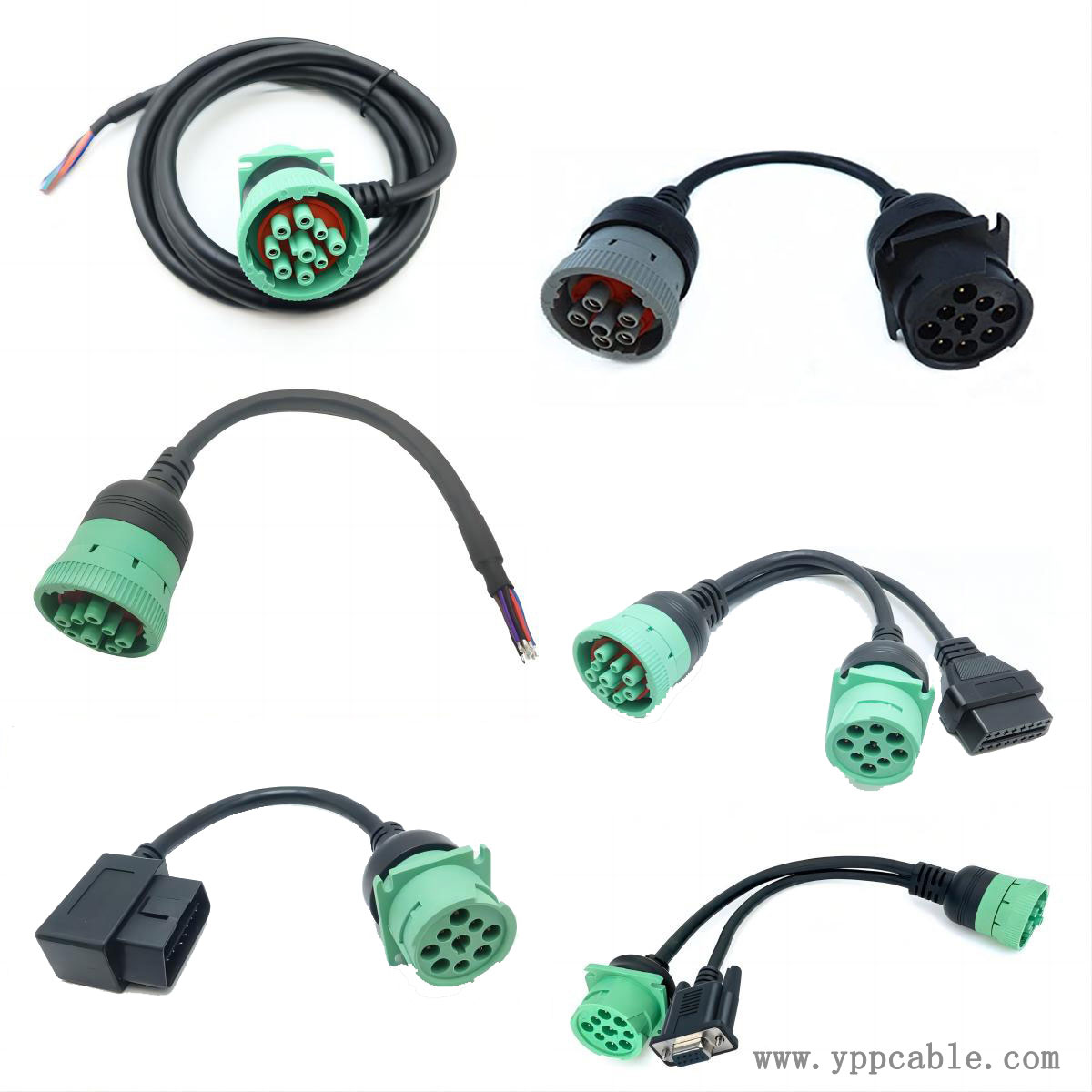J1939 9 pin to J1708 6 pin cable: the hardware foundation for industrial communication protocol conversion
In the field of heavy vehicles and industrial equipment, J1939 and J1708 are two major communication protocols. The former is based on CAN bus and widely used in modern trucks, construction machinery, and diesel generator sets; The latter is based on RS-485. When users need to connect diagnostic tools that support J1939 protocol to old devices equipped with only J1708 interface, the J1939 9-pin to J1708 6-pin cable becomes the key hardware to solve the compatibility problem of the protocol.

Protocol Differences and Conversion Principles
The core difference between J1939 and J1708 lies in the physical layer and data link layer:
Physical interface: J1939 uses a 9-pin connector and defines signals such as CAN-H, CAN_L, CAN_SHLD, etc; J1708 uses a 6-pin interface to achieve differential signal transmission through an RS-485 transceiver.
Message format: J1939 constructs a hierarchical data structure with parameter group number (PGN) and suspicious parameter number (SPN), and a single frame can carry 8 bytes of data; J1708 uses a 21 byte fixed length message, which requires the transmission of long data through multi frame concatenation.
The core technology of converting cables lies in the built-in protocol conversion chip, which includes the following functions:
Physical layer adaptation: Signal level conversion is achieved through CAN transceiver and RS-485 driver;
Data link layer processing: parsing the extended frame identifier of J1939 into the MID message ID of J1708, and processing multi packet data splitting and reassembly;
Priority arbitration: Simulate the conflict detection mechanism of CAN bus in J1708 half duplex communication to avoid data loss.
Contact: Kevin Yu
Phone:
E-mail: yppcable@126.com
Whatsapp:
Add: FL2,Bld 6, Hongte Industrial Park, Yongtou , Changan, Dongguan, Guangdong